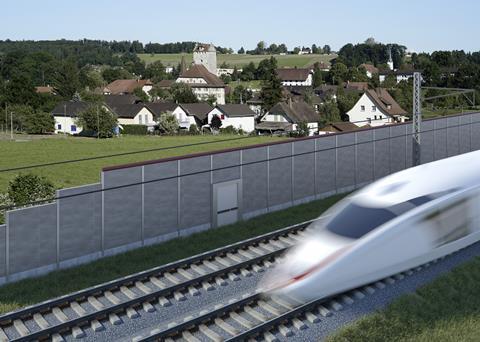
EUROPE: ‘What will this look like in 150 years?’ is a question being asked by Rail Baltica project promoter RB Rail, which sees the greenfield construction project as offering opportunities to take a very long-term view of where rail technology is heading, and to apply best practice including ‘wish lists’ from other rail projects.
Speaking at a seminar organised by the UK’s Railway Industry Association at the Railtex/Infrarail trade fair in London on May 11, Andy Billington, Innovation & Sustainability Specialist at RB Rail, said starting from scratch rather than upgrading legacy infrastructure enabled the promoter to think in terms of ‘decades not years’.
RB Rail takes the view that Rail Baltica is not just a railway, but more an economic corridor. As such, there are opportunities for energy, data and other infrastructure developments to be integrated into the project under a ‘dig once’ construction strategy.
Multi-modal integration is being ‘designed-in- from the outset, with opportunities for freight management and passenger ticketing systems to be integrated with air services and the busy Tallinn – Helsinki ferry route.
Sensors, machine learning and predictive maintenance can be incorporated at the design stage rather than retrofitted, and RB Rail is taking into account developments such as automation, alternative fuels and improved connectivity. One example is a plan to use FRMCS for the communications bearer, as GSM-R is expected to be obsolete by the time train services begin running.
Maximum use will be made of open standards and data sharing. Billington said that where international standards exist, Rail Baltica will use them, and if they don’t yet exist, it would help to develop them.
While timescales for the project are not yet fixed, it is currently envisaged that the 1 435 mm gauge line will initially open in multiple separate sections to be joined up as construction makes further progress. The first section could be operational as early as 2027, with the full route potentially completed in 2030.
Meanwhile, Russia’s invasion of Ukraine means that the European Union’s view of the project has moved from ‘something that could happen’, to ‘something that needs to happen’, Billington told Railway Gazette International.
The exclusion of contractors from Russia and Belarus may provide new opportunities for companies from elsewhere in Europe. Because the project is focusing on best value over the full life-cycle and not just lowest first cost, Russian companies were most likely to have been competitive on the supply of bulk materials such as ballast where there is limited scope for innovation. However their places will now need to be filled by contractors from elsewhere.

















